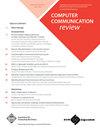IPv6地址在今天的互联网中扮演的多重角色
IF 2.8
4区 计算机科学
Q3 COMPUTER SCIENCE, INFORMATION SYSTEMS
引用次数: 5
摘要
Internet通过IP地址来识别和定位所连接设备的网络接口。IPv4是在40多年前引入的,它指定32位地址。随着互联网的发展,可用的IPv4地址最终在十多年前耗尽。IETF设计的IPv6具有更大的由128位地址组成的寻址空间,将耗尽问题进一步推迟到未来。在本文中,我们认为,这个大的寻址空间允许重新考虑如何使用IP地址,并使改进,简化和扩展互联网。通过重新审视IPv6寻址范式,我们证明它开辟了几个研究机会,可以在今天进行调查。主机可以从几个IPv6地址中受益,以提高他们的隐私,击败网络扫描,提高使用几个移动接入网络和他们的移动性,以及提高多核服务器的性能。网络运营商可以在不增加BGP RIB负担的情况下更有效地解决多归属问题,通过分段路由实现功能链,在给定特定网络指标的情况下区分域内和域外路由,并提供更细粒度的多播服务。本文章由计算机程序翻译,如有差异,请以英文原文为准。
The multiple roles that IPv6 addresses can play in today's internet
The Internet use IP addresses to identify and locate network interfaces of connected devices. IPv4 was introduced more than 40 years ago and specifies 32-bit addresses. As the Internet grew, available IPv4 addresses eventually became exhausted more than ten years ago. The IETF designed IPv6 with a much larger addressing space consisting of 128-bit addresses, pushing back the exhaustion problem much further in the future. In this paper, we argue that this large addressing space allows reconsidering how IP addresses are used and enables improving, simplifying and scaling the Internet. By revisiting the IPv6 addressing paradigm, we demonstrate that it opens up several research opportunities that can be investigated today. Hosts can benefit from several IPv6 addresses to improve their privacy, defeat network scanning, improve the use of several mobile access network and their mobility as well as to increase the performance of multicore servers. Network operators can solve the multihoming problem more efficiently and without putting a burden on the BGP RIB, implement Function Chaining with Segment Routing, differentiate routing inside and outside a domain given particular network metrics and offer more fine-grained multicast services.
求助全文
通过发布文献求助,成功后即可免费获取论文全文。
去求助
来源期刊

ACM Sigcomm Computer Communication Review
工程技术-计算机:信息系统
CiteScore
6.90
自引率
3.60%
发文量
20
审稿时长
4-8 weeks
期刊介绍:
Computer Communication Review (CCR) is an online publication of the ACM Special Interest Group on Data Communication (SIGCOMM) and publishes articles on topics within the SIG''s field of interest. Technical papers accepted to CCR typically report on practical advances or the practical applications of theoretical advances. CCR serves as a forum for interesting and novel ideas at an early stage in their development. The focus is on timely dissemination of new ideas that may help trigger additional investigations. While the innovation and timeliness are the major criteria for its acceptance, technical robustness and readability will also be considered in the review process. We particularly encourage papers with early evaluation or feasibility studies.
 求助内容:
求助内容: 应助结果提醒方式:
应助结果提醒方式:


